Brickellia coulteri, Coulter's Brickellbush
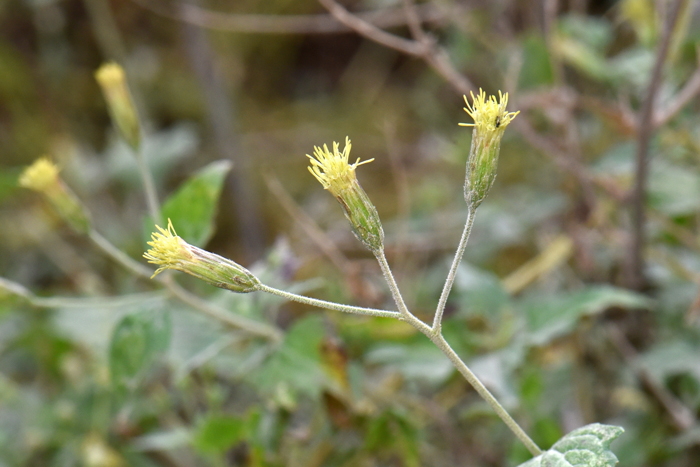
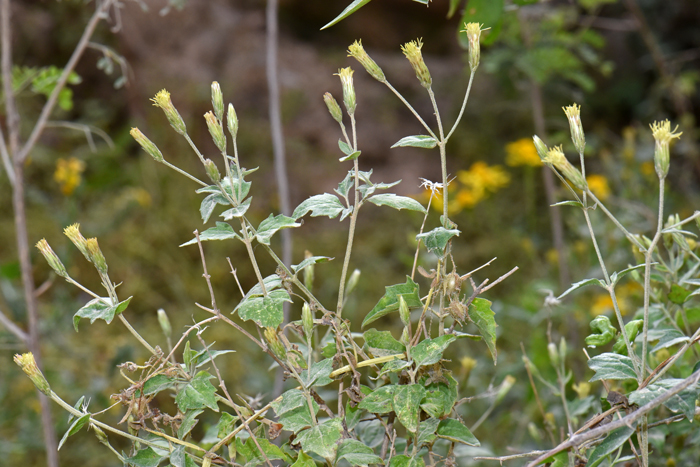
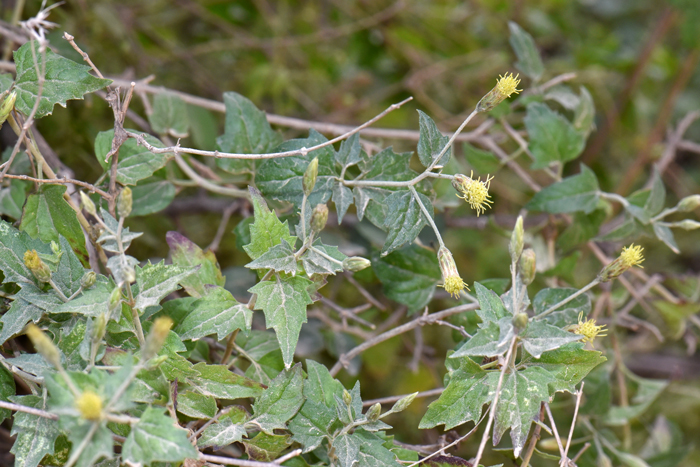
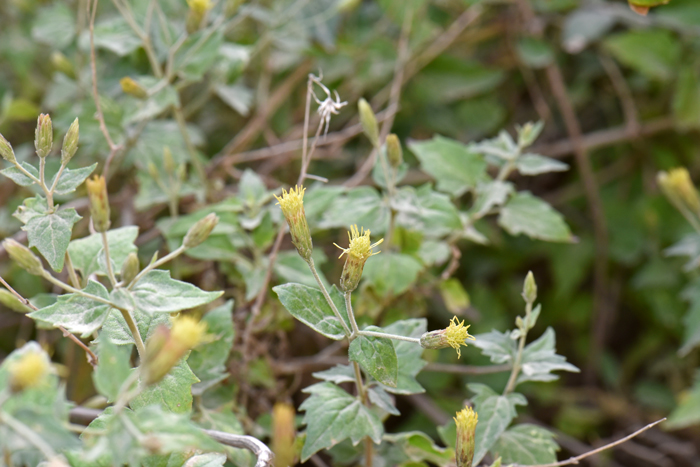
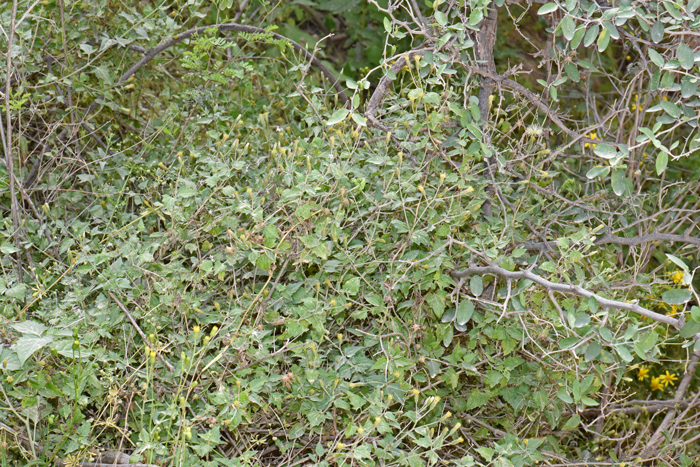
Scientific Name: Brickellia coulteri
Common Name: Coulter's Brickellbush
Also Called: Coulter Brickellbush
Family: Asteraceae, Sunflower Family
Synonyms: (Coleosanthus coulteri)
Status: Native
Duration: Perennial
Size: 1 to 3 feet (30-90 cm) or more 5 feet (150 cm).
Growth Form: Shrub, subshrub; several stems branching from base; plants ascending to spreading; covered with short, soft yellow or yellow-gray hairs (pubescent), often gland-dotted, somewhat sticky.
Leaves: Green; leaves arranged opposite along stems; leaves with short stems (petioles), leaf shape ovate to deltate; leaf edges or margins with 1 to 3 sets of sharp teeth, usually near the base.
Flower Color: Light yellowish/green, sometimes purple or brown tinged; heads in loose panicles; flowering stalks or peduncles covered with short, soft hairs (pubescent) and sometimes gland-dotted; disk florets only, 13 to 25; fruit is a yellow-brown to yellow-gray cypsela with a pappus of smooth to barbed (barbellulate) bristles.
Flowering Season: March, April or May and again September, October and November.
Elevation: 2,000 to 4,000 feet (600-1,200 m).
Habitat Preferences: Arid rocky slopes, hillsides, canyons.
Recorded Range: A strictly southwestern species that is found mostly in AZ, NM, TX as well as northern Mexico and Baja California. Brickellia coulteri is found primarily in Arizona and also in the southwest part of New Mexico and extreme west Texas.
North America & US County Distribution Map for Brickellia coulteri.
North America species range map for Brickellia coulteri:
North American range map courtesy of Virginia Tech, Dept. of Forest Resources & Environmental Conservation
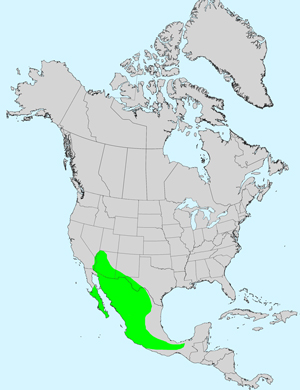
U.S. Weed Information: Unknown
Invasive/Noxious Weed Information: Unknown
Wetland Indicator: Unknown
Threatened/Endangered Information: Unknown
Genus Information: In North America there are 36 species and 36 accepted taxa overall for Brickellia. World wide, The Plant List includes 112 accepted species names and includes a further 136 of infraspecific rank for the genus.
The genus Brickellia was published by Stephen Elliott in 1824.
In the Southwestern United States: Arizona has 22 species of Brickellia, California has 13 species, Nevada has 12 species, New Mexico has 19 species, Texas has 15 species, Utah has 7 species. All data is approximate and subject to taxonomic changes.
Comments: Coulter’s Brickellia is a fragrant shrub and may be identified in part by its distinctive bracts or linear phyllaries tinged brownish, pink or purple. With 22 species of Brickellia in Arizona, it is often difficult to determine which species you are observing. As with many similar species the main differences are details of the flowers which vary greatly. Brickellia coulteri is common in our state and can be identified more readily than others.
In Southwest Desert Flora also see; California Brickellbush, Brickellia californica, Chihuahuan Brickellbush, Brickellia floribunda and Veiny Brickellbush, Brickellia venosa.
The genus Brickellia was published by Stephen Elliott in 1824.
The specific epithet coulteri is named to honor Dr. Thomas Coulter (1793-1843), an Irish physician, botanist and explorer. Dr. Coulter was one of the first botanists to collect plants and conduct botanical research in Arizona. He is well known for his travels and botanical research in Mexico and he was a member of the Royal Irish Academy, and a fellow of Trinity College, Dublin, where he founded the college's herbarium.

